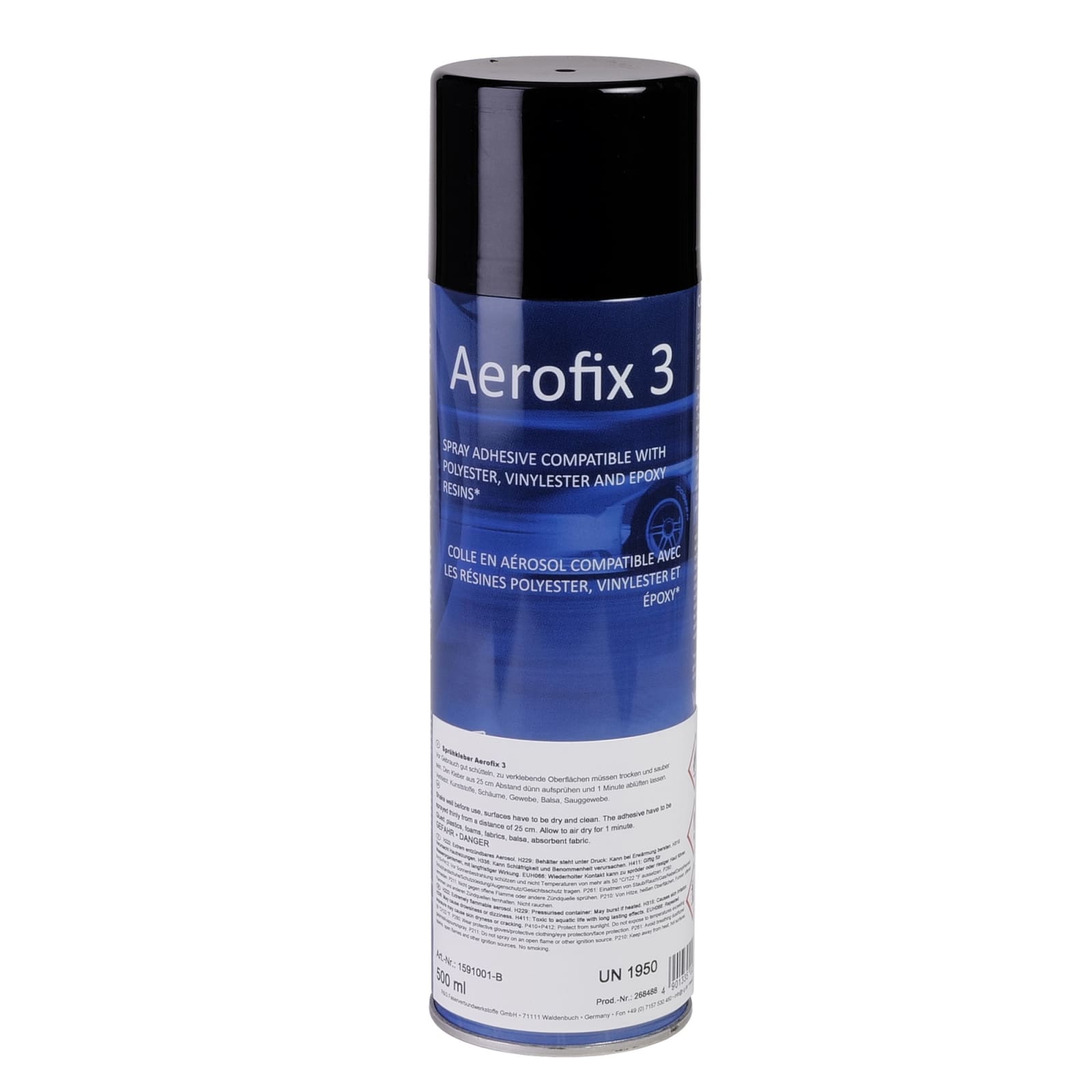Spray adhesive AEROFIX 3 , 500 ml
Very well suited for bonding and shear-bonding of many materials: plastics, reinforcing fabrics of all kinds, absorbent nonwovens, foams, lightwood (e.g. balsa).
Resin infusion, vacuum forming, or RTM process:
This high-strength spray adhesive fixes the reinforcing fibres during resin infusion without affecting the surface.
Features and benefits
- Repositionable, high-strength adhesive spray compatible with gel coat, fiberglass mats, and glass and carbon fabrics.
- Fully compatible with polyester and vinyl ester resins, conditionally compatible with epoxy resins (at its discretion and with preliminary tests).
- The mechanical performance of laminates is not affected, even if the spray is used in larger quantities than actually required.
- The curing of resins is not affected.
- The interlaminar adhesion between the different layers of a laminate is not affected.
Consumption per can: 5-10 m²
Colour: Blue transparent (By colouring the spray, it is easier to see which areas are already wetted. As soon as the adhesive dries, the colour is no longer visible).
Application
- Shake the spray well before use and make sure that the surfaces to be glued are clean and dry.
- Hold the spray can vertically and spray an even layer of adhesive from a distance of 25 cm. The adhesive must not look wet. If this is the case, please spray from a slightly greater distance.
- To achieve optimum adhesion, spray the adhesive onto both surfaces to be joined and wait for about one minute to allow the solvent contained in the adhesive to evaporate.
- Finally, press the two surfaces firmly together to ensure good adhesion.
- Spray out the spray can after each use, holding it upside down.
Important note
Polychloroprene-based spray adhesives, such as Infutac and Aerofix, are generally less suitable for fixing the first fibre layer in the mold directly over the release agent. Spray adhesives are contact adhesives that adhere very well even to surfaces treated with release agents. It does not matter whether they are carnauba and synthetic waxes or film release agent PVA. It is not solvents in the spray adhesive that are responsible for adhesion, but the viscoplastic adhesive bond.
Processing with epoxy resins
Polychloroprene dissolves completely only in combination with resins based on polyester, vinyl ester, methyl methacrylate, etc. When used with epoxy resins, it is assumed that the adhesive, provided it has not been overapplied and thus does not significantly impair the permeability of the dry fibre reinforcements, exerts only a relatively minor influence on the subsequent mechanical properties.
This is state of the art and means that used correctly, the products are also compatible with epoxy resins.
Vacuum infusion
In the case of vacuum infusion, a topcoat (e.g. UP-Vorgelat or suitable 2K coatings) is typically first applied to the mould, and the layer build-up is then started on top of this. This prevents adhesion of the spray adhesive to the surface of the mould.
Without a topcoat, not only is the moulding of the components more difficult but there is also spray adhesive directly on the surface, which must be carefully removed before a further painting process.






